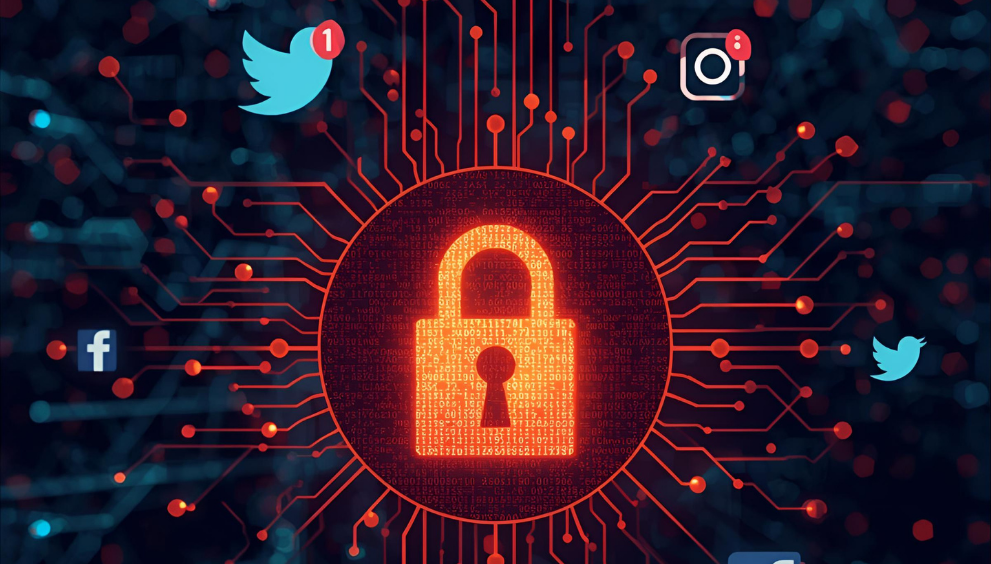A friendly DM from a familiar face. A giveaway that looks genuine. A video that sounds just right. This is how many online traps begin. Timelines and chat apps feel personal, which is why social media security deserves real attention in 2025 for families, students, creators and small businesses across India.
In this article, you will explore how risks have changed, the tactics criminals use, a practical checklist to harden every account, quick actions after a mistake, and how reputable software adds a quiet safety net.
Why Social Media Security is Important in 2025
Criminal groups have moved to the spaces people use every hour. They study open profiles, imitate brand pages and push links through private chats that often trigger phishing attack. As usage grows across metros and small towns alike, social media and security now sit side by side. Strong habits reduce exposure without changing how people share, shop or learn online.
How Online Privacy Risks Have Evolved
Scams now look professional, using stolen photos and captions to push urgent offers, catching people off guard before they think.
- Check profiles carefully for tiny handle changes, recent creation dates, and recycled pictures.
- Slow down. Verify job, scholarship or delivery claims through official websites or phone numbers you find yourself.
- Avoid clicking shortened links in DMs; open the app’s help pages directly and review warnings.
- Limit public posts and location tagging; review privacy settings and remove old third-party app permissions.
Why Hackers Target Social Media Users
Hackers go where people relax online, using trust, speed and oversharing to turn friendly conversations into quick, damaging mistakes every day. Simple routines that protect your internet experience reduce exposure.
- Public posts reveal hobbies, workplaces and travel plans, which help craft convincing stories.
- Private chats allow pressure without witnesses, so quick replies are common.
- Reused passwords unlock several platforms at once.
- Cheap tools make it simple to create and recycle fake accounts.
Real Examples of Social Media Attacks
These snapshots reflect everyday traps Indians face online, showing how believable posts and messages quietly escalate into costly trouble nationwide.
- A giveaway page that looks like a brand account asks winners to pay a “verification fee”.
- A relative who has been cloned requests a small UPI transfer for a medical emergency.
- A creator’s post shares a shortened link to a supposed policy update that leads to a fake login.
- A video appears to show a public figure endorsing an investment group on a messaging channel.
Common Threats on Social Media
Understanding patterns helps people slow down and spot traps.
1. Fake Profiles and Impersonation
Look for tiny spelling changes in handles, recent pages with recycled photos, or follower lists that feel random. Impersonators often copy older posts to look established, then switch to DMs. Be cautious with unknown files and links, including APK malware in WhatsApp shared as “install this update” or “bonus features.” Sensible checks, along with trusted social media security tools, make this tactic easier to catch.
2. Phishing Links and Scam Messages
Alerts about copyright strikes, prize wins or account restrictions try to create fear or excitement. Many use link shorteners to hide destinations. Skip the link. Open the official app, go to Help or Settings and verify from there. This simple habit supports social media safety every day.
3. Data Theft and Identity Fraud
Once criminals obtain a password, they move quickly to email, wallets and other apps. Contacts may receive the same lure from the compromised account. Think broadly about social media cybersecurity so recovery covers all connected services, not just the first profile breached.
4. AI-Generated Content and Deepfakes
Synthetic videos and voice notes are harder to judge at a glance. Watch for odd lighting, mismatched earrings, blurred edges, or awkward lip-sync. Be wary of DMs pushing OTPs or urgent checks; these cues can help you spot fake OTP messages before you react. Confirm unexpected requests via another channel, such as a regular call or an in-person check. Careful viewing protects privacy and security in social media.
Top Tips to Protect Your Social Media Networks
Use this list once, then review it every month. These social media safety tips are quick to follow and easy to teach at home or at work.
1. Use Strong and Unique Passwords
Strong, unique passwords stop breaches from spreading across your digital life.
- Create 12–16 characters with a mix of letters, numbers and symbols.
- Avoid names, birthdays and team references that appear on your profile.
- Use a password manager so every platform has a unique login.
- This is the base of social media security best practices.
2. Enable Two-Factor Authentication (2FA)
Second-step verification blocks hijackers, even when passwords are already compromised.
- Turn on 2FA in account settings.
- Prefer an authenticator app or security key over SMS codes.
- Store backup codes offline.
- This step strengthens social media and security across all devices.
3. Review Privacy and App Permissions
Tight settings reduce exposure and limit data shared with strangers.
- Set profiles to Friends or Connections, as appropriate.
- Limit who can tag, mention or message you.
- Remove old games, quizzes and third-party apps that serve no purpose.
- Routine maintenance helps you stay safe on social media without changing how you post.
4. Avoid Suspicious Links or Third-Party Apps
Sceptical clicking habits prevent traps that steal money and credentials.
- Do not approve unknown browser extensions or APKs that promise fast growth.
- Be cautious with shortened URLs in comments and DMs, especially during sales or festivals.
- Type important addresses yourself instead of clicking through.
- Good habits go hand in hand with social media security tools to keep risky pages at bay.
5. Keep Your Devices and Software Updated
Updates patch flaws that criminals exploit, keeping accounts and devices safer.
- Update operating systems, browsers and apps on phones and laptops.
- Enable automatic updates where available.
- Remove abandoned apps that no longer receive patches.
- Timely updates are a core part of social media and security hygiene.
How to Spot and Avoid Social Media Scams
Here you will explore how to spot and avoid social media scams:
Common Signs of a Social Media Scam
Look for patterns; slow down, and trust your gut first.
- Brand-new profile with little history that suddenly reaches out.
- Requests for OTPs, QR scans or payments outside recognised apps.
- Posts that mix high emotion with a short deadline.
- Audio or video that looks almost right but has small timing glitches.
- Use these cues along with reputable social media security tools that block known malicious sites.
What to Do if You Click on a Suspicious Link
Act calmly, assess quickly, and follow these steps without delay.
- Turn off the device’s internet to limit data usage.
- Change the password for the affected network and the email linked to it.
- Check recent logins and sign out from unknown sessions.
- Revoke access for unfamiliar apps and remove shady browser extensions.
- Run a full device scan, then update all software.
- Inform close contacts that your account may have sent unwanted messages.
- These steps are practical social media safety responses that reduce harm quickly.
How to Report Fake Accounts or Scammers
Collect evidence, report in-app, and escalate when money’s involved seriously.
- Use in-app reporting tools and keep screenshots of posts or chats.
- If money is involved, contact your bank immediately.
- File a complaint at the National Cybercrime Reporting Portal or call 1930 for guidance.
- Teach family members, especially students and elders, to report promptly.
- Prompt reporting supports staying safe on social media across your circle.
How Quick Heal Protects You From Social Media Threats
Protective software is not a replacement for good habits. It adds a quiet layer that helps when people are busy. Capabilities to look for include:
- Blocking known malicious links in browsers and in-app web views.
- Detecting phishing pages that imitate platform logins.
- Scanning downloads and highlighting risky app permissions.
- Safe-banking and web-protection modes for everyday browsing.
Quick Heal Internet Security
Quick Heal Internet Security offers web protection, anti-phishing checks, email scanning, safe banking, and real-time monitoring across Windows and Android. It also includes firewall controls, ransomware defence, and parental settings. Use alongside strong passwords, 2FA, and regular updates for protection.
Improve Privacy and Security in Online Social Media
Limit public data, use unique passwords, enable 2FA, avoid unknown links, and keep devices patched. Share these social media safety tips with family members and colleagues so everyone follows the same playbook. With steady routines and sensible software, social media security becomes a habit rather than a one-time fix.
- Review privacy settings monthly and remove old app permissions you no longer need.
- Turn on login alerts and check active sessions, then sign out of anything you do not recognise.
- Use a password manager to keep unique logins and replace weak or reused passwords.
- Verify unexpected money or document requests through a second channel before responding.
- Teach children and elders the basics, and keep the 1930 cyber helpline saved for quick help.
frequently asked questions
-
What are five ways to stay safe on social media?
Use unique passwords, enable 2FA, restrict profile visibility, avoid unknown links and apps, and keep devices updated. These habits form the core of staying safe on social media.
-
What is the most secure social media platform?
Security depends on how settings are configured and maintained. Review privacy controls on each platform and apply the strictest options that still meet daily needs.
-
Best antivirus for social media security?
Choose a suite with strong web protection, anti-phishing tools, safe-banking tools, and mobile scanning. Pair software with regular reviews of permissions for balanced social media and security.
-
What is the single most important step I can take to secure my accounts?
Enable two-factor authentication. It stops many takeovers even if a password leaks.
-
Should I use a different password for every social media account?
Yes, a password manager keeps unique logins simple and supports long-term social media security across all platforms.



